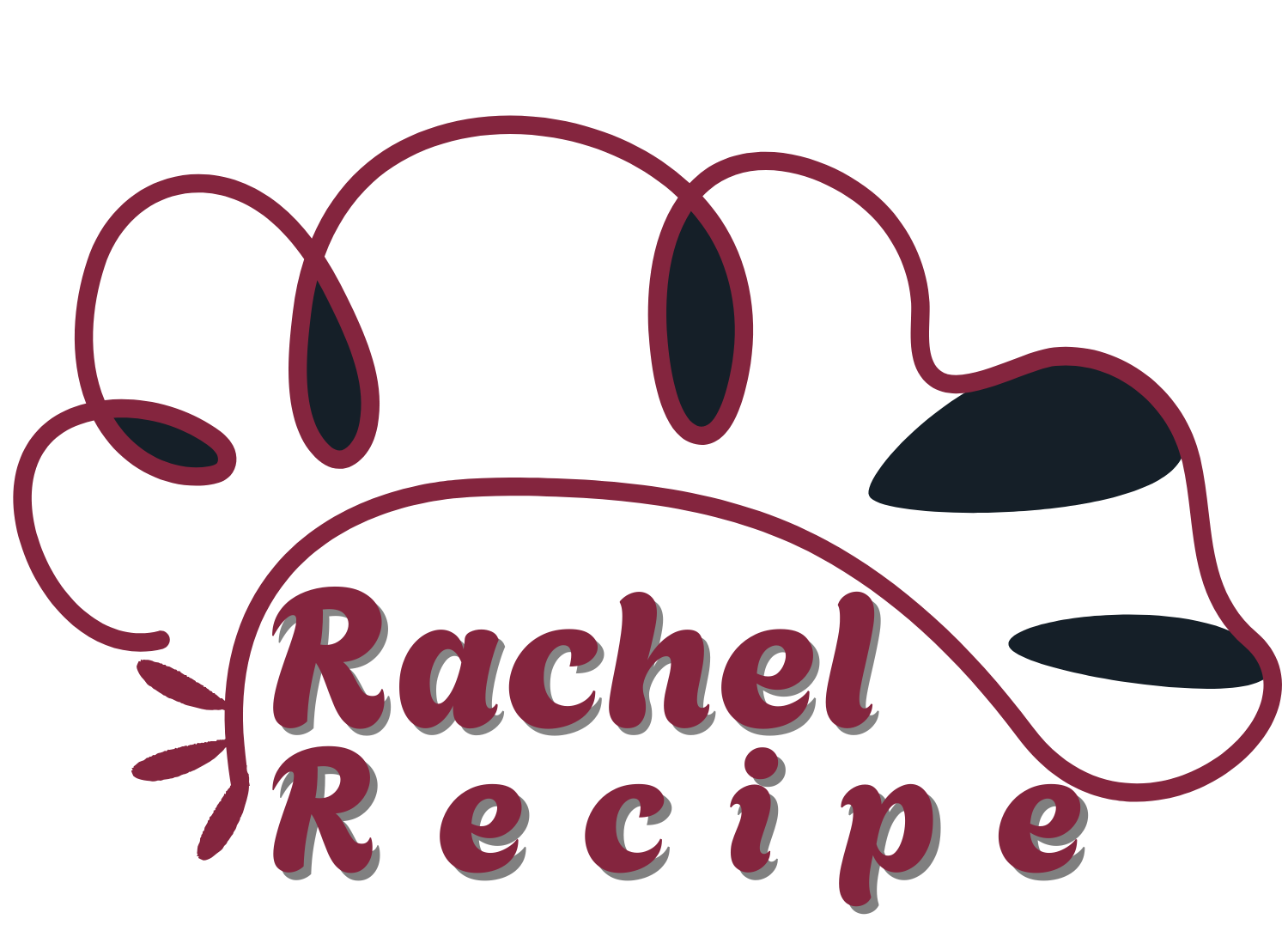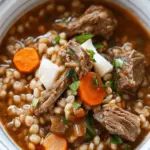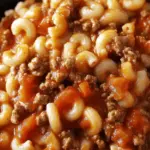This vibrant Salmon Bibimbap is a feast for the eyes and the taste buds. The combination of perfectly cooked salmon, sautéed spinach, and crunchy carrots sits atop a bowl of fluffy rice, creating a satisfying and balanced meal. The rich gochujang sauce adds a flavorful heat, while the fried egg completes the dish with its runny yolk.
Whether you’re looking for a quick weeknight dinner or a meal to impress your friends, this bibimbap is a versatile and delicious option. With its endless variations and bold flavors, you can customize it to suit your preferences and enjoy a nourishing, colorful meal in no time.
Full Recipe:
-
2 salmon fillets, skinless
-
1 tablespoon vegetable oil
-
2 teaspoons sesame oil
-
1 tablespoon soy sauce
-
1 tablespoon rice vinegar
-
1 teaspoon sugar
-
1/2 cup spinach
-
1/4 cup kimchi
-
1/4 cup bean sprouts
-
1/4 cup julienned carrots
-
1 egg
-
1 tablespoon gochujang (Korean chili paste)
-
1 teaspoon sesame seeds
-
Cooked rice (for 2 servings)
Directions:
-
Start by heating vegetable oil in a skillet over medium-high heat. Cook the salmon fillets for 3-4 minutes per side until fully cooked, then remove from the skillet and set aside.
-
In the same skillet, add sesame oil and sauté spinach until wilted, about 2 minutes. Set aside.
-
Prepare the other toppings: In separate bowls, place kimchi, bean sprouts, and julienned carrots.
-
To make the bibimbap sauce, mix soy sauce, rice vinegar, sugar, and a tablespoon of gochujang together.
-
In a small skillet, fry an egg sunny-side up.
-
To assemble the bibimbap: Place a serving of rice in a bowl. Top with the cooked salmon, sautéed spinach, kimchi, bean sprouts, carrots, and fried egg. Drizzle the bibimbap sauce over the top and sprinkle with sesame seeds.
Prep Time: 15 minutes | Cooking Time: 15 minutes | Total Time: 30 minutes
Kcal: 550 kcal | Servings: 2 servings
What is Bibimbap?
Bibimbap is a classic Korean dish known for its colorful presentation and diverse flavors. The name “bibimbap” translates to “mixed rice,” and true to its name, the dish consists of a bowl of rice topped with a variety of vegetables, protein, a fried egg, and spicy gochujang sauce. Each element in the dish is carefully prepared and then mixed together right before eating, allowing the different flavors and textures to blend harmoniously.
Bibimbap has a long history in Korean cuisine and has evolved over time to suit regional and seasonal ingredients. While the traditional version might feature beef or pork as the protein, many variations exist to cater to different dietary preferences, including vegetarian, vegan, and seafood-based versions. Salmon bibimbap is a particularly popular choice for those looking for a lighter, omega-3-rich option.
Why Choose Salmon for Bibimbap?
Salmon is an excellent choice for bibimbap for several reasons. First, it provides a rich, tender texture and a mild, slightly sweet flavor that pairs wonderfully with the other ingredients in the dish. Salmon is also packed with healthy fats, including omega-3 fatty acids, which are beneficial for heart health, brain function, and inflammation reduction. These healthy fats add to the dish’s satiating qualities, making it a filling meal without being heavy.
Moreover, salmon’s versatility makes it the perfect protein for bibimbap. Whether pan-seared, grilled, or baked, it can be easily incorporated into this dish, adding a subtle smokiness or a fresh flavor depending on your preparation method. The rich, oily texture of the salmon complements the crunchy vegetables and the rice beautifully, creating a balanced dish that is both hearty and refreshing.
Health Benefits of Salmon Bibimbap
Aside from being delicious, salmon bibimbap is a highly nutritious meal. The combination of salmon and vegetables makes it an excellent source of protein, fiber, vitamins, and minerals. The vegetables typically used in bibimbap, such as spinach, carrots, and bean sprouts, are high in antioxidants, vitamins A, C, and K, as well as folate and fiber. These nutrients contribute to overall health by supporting the immune system, promoting skin health, and aiding digestion.
The salmon in this dish is a powerhouse of omega-3 fatty acids, which are essential fats that the body cannot produce on its own. Omega-3s are known to promote brain health, reduce the risk of heart disease, and improve mood. Eating a diet rich in these healthy fats has also been linked to reduced inflammation and improved eye health.
Additionally, the fermented kimchi often included in bibimbap is a probiotic-rich food that can benefit gut health. Kimchi contains beneficial bacteria that support digestion and help maintain a healthy balance of gut flora, which is important for overall well-being. The spicy gochujang sauce adds a burst of flavor while providing antioxidants from the chili peppers, further enhancing the health benefits of this dish.
Customization and Variations
One of the great things about bibimbap is that it is highly customizable. While the traditional bibimbap is made with specific vegetables and protein, you can easily switch up the ingredients to suit your preferences or what you have on hand. For example, you can swap out the spinach for kale or add other vegetables like zucchini, mushrooms, or bell peppers for more variety. If you prefer a different protein, you can replace the salmon with other types of fish, chicken, or even tofu for a vegetarian version.
The sauce used in bibimbap is another area where you can get creative. While the classic gochujang sauce is spicy and flavorful, you can adjust the heat level to suit your taste. If you prefer a milder version, you can reduce the amount of gochujang or substitute it with a different type of hot sauce. Some people even opt for a sweet soy sauce or miso-based sauce for a different flavor profile.
For a healthier alternative, you can opt for brown rice instead of white rice, or even use quinoa for an extra boost of protein and fiber. The possibilities are endless, and this dish is perfect for experimenting with different flavors and ingredients.
Serving and Pairing Suggestions
Salmon bibimbap is a complete meal on its own, but you can also serve it with a variety of sides to enhance the experience. For a more traditional Korean meal, pair it with some Korean side dishes, such as kimchi, pickled vegetables, or a simple cucumber salad. A cup of miso soup or a light vegetable broth would also complement the flavors of the bibimbap and add extra warmth to the meal.
If you’re serving salmon bibimbap as part of a larger dinner, it pairs wonderfully with other Korean dishes like bulgogi (Korean BBQ beef), japchae (stir-fried glass noodles), or pajeon (savory Korean pancakes). For dessert, consider serving a sweet and refreshing Korean treat, such as bingsu (shaved ice with sweet toppings) or a bowl of seasonal fruit.
Making Bibimbap at Home: Tips for Success
While salmon bibimbap is relatively easy to make at home, there are a few tips to ensure the dish turns out perfectly every time. First, it’s important to cook the rice properly. Bibimbap requires freshly cooked rice that is fluffy and slightly sticky, which helps the ingredients stick together when mixed. You can use a rice cooker to make this process easier and ensure your rice is perfectly cooked.
When preparing the salmon, be sure not to overcook it. Salmon is best when it’s still moist and tender, so keep an eye on the cooking time and remove the fillets from the pan as soon as they’re done. If you prefer, you can also grill the salmon for an added smoky flavor.
The vegetables in bibimbap are typically sautéed or lightly blanched, so be sure to cook them just enough to preserve their color and texture. Overcooking the vegetables can cause them to lose their crunch and vibrant appearance.
Finally, the bibimbap sauce is key to tying everything together. The sweet, salty, and spicy combination of gochujang, soy sauce, and rice vinegar is what gives bibimbap its signature flavor. Be sure to adjust the sauce to your liking by adding more gochujang for extra heat or a little sugar for sweetness.
Conclusion
Salmon bibimbap is a flavorful, nutritious, and versatile dish that can easily become a staple in your cooking repertoire. Whether you’re a fan of Korean cuisine or simply looking for a wholesome meal, this dish delivers on both taste and health benefits. With its combination of fresh salmon, colorful vegetables, and a spicy kick from gochujang, salmon bibimbap is sure to satisfy your cravings and leave you feeling full and energized.
With its ease of preparation, customizable ingredients, and deliciously satisfying flavors, this dish is perfect for both busy weeknights and special occasions. Plus, it’s a fantastic way to get your fill of heart-healthy omega-3s, fiber, and essential vitamins. Whether you’re making it for yourself or serving it to guests, salmon bibimbap is sure to impress and become a favorite in your kitchen.
Enjoy experimenting with this recipe, and feel free to make it your own by adding your favorite vegetables, proteins, and sauces. This dish is not only a feast for the stomach but also for the eyes, with its vibrant colors and inviting presentation. So go ahead, grab your ingredients, and indulge in the flavors of Korea with a delicious bowl of salmon bibimbap.






